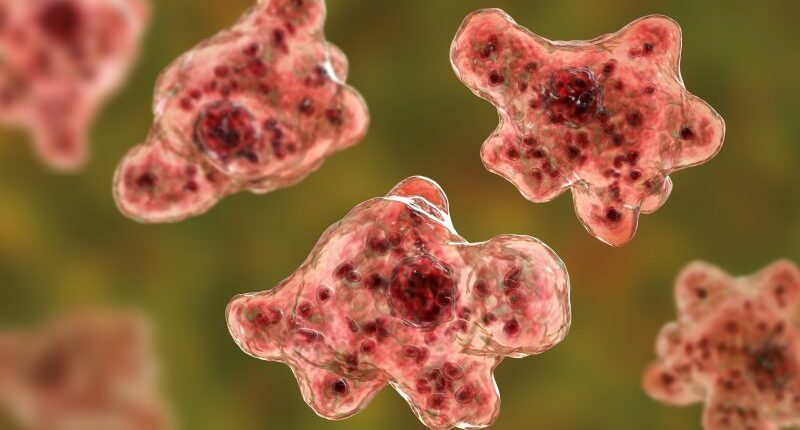Share this @internewscast.com

A family in South Carolina is grieving the tragic loss of their young son, who passed away after being exposed to a rare brain-eating amoeba while swimming in a well-known lake.
The 12-year-old, Jaysen Carr from Columbia, succumbed to an infection linked to Naegleria fowleri on July 18 after spending time in Lake Murray, as stated by the family’s lawyer.
“Jaysen’s family is heartbroken by this inconceivable loss, yet they are also appreciative of the overwhelming support and kindness from the community,” stated attorney Tyler Bailey from the Bailey Law Firm, in a statement shared with Nexstar’s WCBD.
The firm said it was hired by the Carr family to conduct an independent investigation into their son’s death.
“The family has many questions about how and why Jaysen died and wants to do everything in their power to ensure this doesn’t happen to another family,” the statement continued. “Jaysen’s family would like to thank the doctors and nurses at Prisma Health Children’s Hospital-Midlands for their dedicated care and compassion for him and their entire family. We ask for privacy at this time as the family prepares to lay their son to rest.”
Lake Murray, where Jaysen had been swimming, is a reservoir “constructed in the late 1920s to produce hydroelectric power,” according to the South Carolina Department of Natural Resources. It continues to provide water for a hydroelectric facility belonging to Dominion Energy. Swimming and other water sports are available at Lake Murray.
The South Carolina Department of Public Health (DPH) stated it became aware of a case of Naegleria fowleri in early July, the first in the state since 2016. Cases are not required to be reported to the agency.
The agency also told The State there is no “elevated risk associated with Lake Murray,” despite Jaysen’s death. “We expect Naegleria fowleri to be present in any body of warm, fresh water in the United States; however, the risk of infection is very low.”
Naegleria fowleri is a microscopic organism that occurs naturally in soil and warm freshwater sources, including lakes, rivers, ponds, and hot springs, according to the Centers for Disease Control and Prevention. In rare cases, it can be found in poorly maintained swimming pools, splash pads, and tap water.
It is most often contracted when water containing the amoeba enters through a person’s nose while swimming. The amoeba can infect the brain and destroy brain tissue, causing an infection known as primary amebic meningoencephalitis (PAM).
Infections have also occurred in a few instances when people used tap water to rinse their sinuses or cleanse their nasal passages, as was the case with a Texas woman who died earlier this summer.
The infection cannot, however, be contracted by swallowing water containing the amoeba or be spread to others, according to the CDC.
Though PAM is rare — typically affecting fewer than 10 people a year in the U.S. — it is almost always fatal, experts say. The CDC reported that of the 167 reported cases between 1962 and 2024, only four people have survived.
Early symptoms of the infection typically appear about five days after exposure, but can occur anywhere between one and 12 days after, according to the CDC. They include headache, fever, nausea, and vomiting.
As the infection progresses, health experts say symptoms including stiff neck, confusion, lack of attention, loss of balance, and hallucinations can happen.
South Carolina officials said there is no greater risk to the public, and the chances of contracting the infection remain low.
People can further reduce their risk of infection by limiting the amount of water that forcefully enters their nose by holding it or wearing a nose clip when jumping or diving in fresh water.











